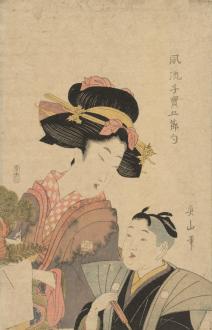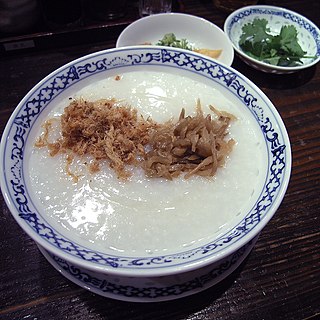Related Research Articles

The traditional Chinese calendar is a lunisolar calendar which identifies years, months, and days according to astronomical phenomena. In China, it is defined by the Chinese national standard GB/T 33661-2017, "Calculation and Promulgation of the Chinese Calendar", issued by the Standardization Administration of China on May 12, 2017.

The Japanese New Year is an annual festival with its own customs. Since 1873, the official Japanese New Year has been celebrated according to the Gregorian calendar, on January 1 of each year, New Year's Day. However, some traditional events of the Japanese New Year are partially celebrated on the first day of the year on the modern Tenpō calendar, the last official lunisolar calendar which was used until 1872 in Japan.

Japanese calendar types have included a range of official and unofficial systems. At present, Japan uses the Gregorian calendar together with year designations stating the year of the reign of the current Emperor. The written form starts with the year, then the month and finally the day, coinciding with the ISO 8601 standard. For example, February 16, 2003 can be written as either 2003年2月16日 or 平成15年2月16日. 年 reads nen and means "year", 月 reads gatsu or 「がつ」and means "month" and finally 日 (usually) reads nichi and means "day".

The Qixi Festival, also known as the Qiqiao Festival, is a Chinese festival celebrating the annual meeting of Zhinü and Niulang in Chinese mythology. The festival is celebrated on the seventh day of the seventh lunisolar month on the Chinese lunisolar calendar.

The Double Ninth Festival (Chongyang Festival in Mainland China and Taiwan or Chung Yeung Festival in Hong Kong and Macau; Chōyō no Sekku; Jungyangjeol, observed on the ninth day of the ninth month in the Chinese calendar, is a traditional Chinese holiday, mentioned in writings since before the Eastern Han period.

The Ghost Festival, also known as the Zhongyuan Festival in Taoism and Yulanpen Festival in Buddhism, is a traditional Taoist and Buddhist festival held in certain East Asian countries. According to the Chinese calendar, the Ghost Festival is on the 15th night of the seventh month.

The Festival of Seven Herbs or Nanakusa no sekku is the long-standing Japanese custom of eating seven-herb rice porridge on January 7 (Jinjitsu); one of the Gosekku.

Children's Day is a public holiday in Japan which takes place annually on May 5 and is the final celebration in Golden Week. It is a day set aside to respect children's personalities and to celebrate their happiness. It was designated a national holiday by the Japanese government in 1948, but has been a day of celebration in Japan since ancient times.

The Emperor's Birthday is an annual Public holiday in Japan celebrating the birthday of the reigning Emperor, which is currently 23 February as Emperor Naruhito was born on that day in 1960. It is enforced by a specific law, "The Law for Special Exception of the Imperial House Law concerning Abdication, etc. of Emperor" of 2017.

Jinjitsu is one of the five seasonal festivals that were integrated into the Japanese Imperial calendar over 1,000 years ago. Sekku is the term given meaning special day of observance. The festival is now celebrated on the seventh day of the first month and is considered a part of the New Year observances that are celebrated during this time.

Tango no Sekku (端午の節句), also known as Ayame no hi, originally referred to an annual ceremony held at the Japanese imperial court on May 5. It was one of the five annual court ceremonies called Gosekku. Since the Kamakura period (1185–1333), when the samurai class seized power, Tango no Sekku has become an event to ward off evil spirits for samurai boys. Japanese armour, kabuto (helmets) and Japanese swords were displayed in houses from the Kamakura period to the Muromachi period (1333–1573). From the Edo period (1603–1867), samurai dolls were displayed in homes, koinobori were hung in gardens. From this period, the custom of decorating houses with offerings on Tango no Sekku spread to the peasant and chōnin classes, and paper kabuto began to be displayed. Since the Showa era (1926–1989), miniatures of samurai armor have become more popular than samurai dolls.

Cimei Township is a rural township in Penghu County, Taiwan. The island is the fifth largest in the Pescadores (Penghu) and the southernmost island in the group. It is the smallest township in Penghu County.
Du Huan was a Chinese travel writer born in Chang'an during the Tang Dynasty.

Laba Festival is a traditional Chinese holiday celebrated on the eighth day of the month of La, the twelfth month of the Chinese calendar. It is the beginning of the Chinese New Year period. It is customary on this day to eat Laba congee.

Nogizaka46 is a Japanese female idol group produced by Yasushi Akimoto, created as the official rival of the group AKB48. They are the first group from the Sakamichi Series, which also includes sister groups Sakurazaka46, Yoshimotozaka46, and Hinatazaka46.

Laba congee is a Chinese ceremonial congee dish traditionally eaten on the eighth day of the twelfth month in the Chinese calendar.
The Gosekku (五節句), also known as sekku (節句), are the five annual ceremonies that were traditionally held at the Japanese imperial court. The origins were Japanese practices merged with Chinese practices and celebrated in Japan since the Nara period in the 8th century CE. The Japanese culture and tradition incorporated this in a unique way that spread throughout the country. The festivals were held until the beginning of the Meiji era. Some of them are still celebrated by the public today.

Congee or conjee is a type of rice porridge or gruel eaten in Asian countries. It can be eaten plain, where it is typically served with side dishes, or it can be served with ingredients such as meat, fish, seasonings and flavourings, most often savory, but sometimes sweet. It is typically served as a meal on its own, especially for breakfast or people who are ill. Names for congee are as varied as the style of its preparation, but all are made with rice cooked as a softened porridge with a larger quantity of water than other types of cooked rice like pilaf or claypot rice.
Lady Saso is said to be the mother of Hyeokgeose of Silla. Also known as the Sacred Mother of Mt. Seondo (Hangul:선도산), legends say she was a princess from the Chinese royal family. Having coming from China and settling upon the Jinhan Confederacy, she gave birth to Hyeokgeose of Silla. Later, she was honored as great king by King Gyeongmyeong.
References
- 1 2 "正月初七 人日/摊煎饼/吃七宝羹 [春节民俗]". 中华农历网. Retrieved 3 February 2017.
- ↑ "出生地點之謎" (in Chinese). 人民網. 17 November 2005. Retrieved 3 February 2017.
- ↑ 初七 (15 February 2005). "初七人日 中國朝姓之旅". 東方日報. Retrieved 3 February 2017.
- ↑ 陈坤纲 (30 January 2001). "初七人日捞鱼生庆生日". 新明日报. Archived from the original on 3 July 2012. Retrieved 3 February 2017.